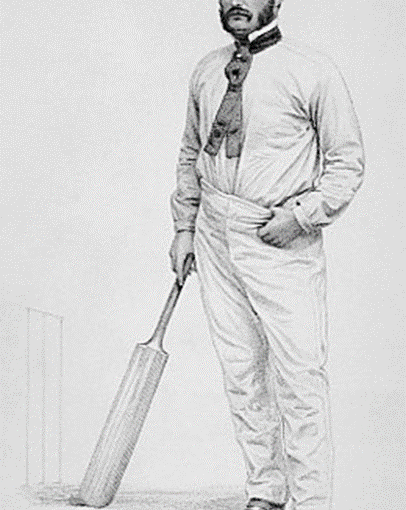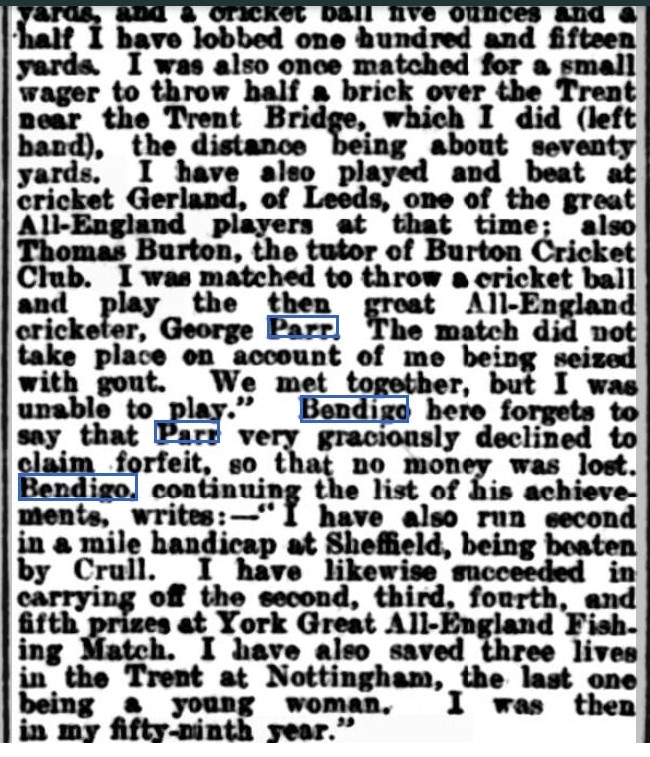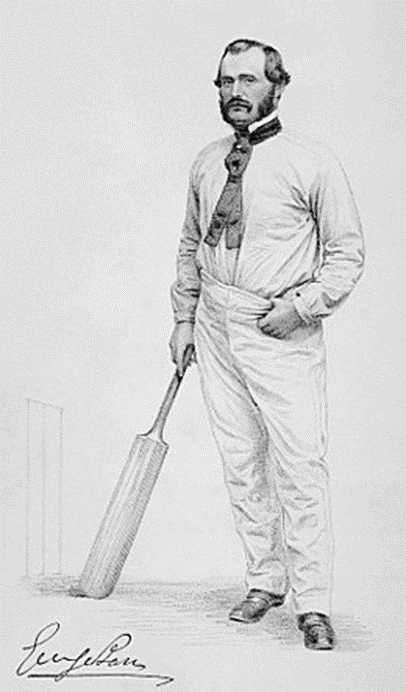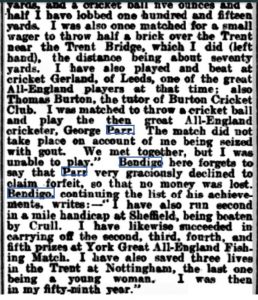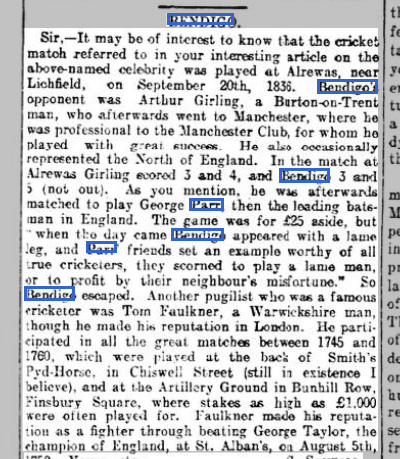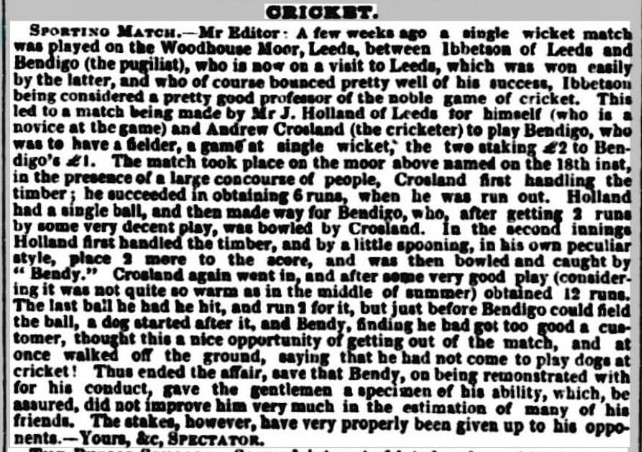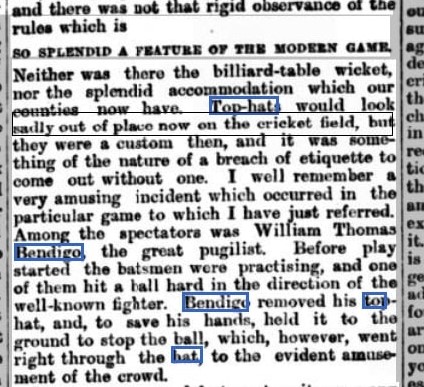The much anticipated third and final bout between Bendigo and Ben Caunt took place on 29th September 1845. The location was in a field close to Sutfield Green, beyond Lillington Level, in Oxfordshire. The site is now part of Milton Keynes in Buckinghamshire, close to the A5 Watling Street at Stony Stratford.
Here is how the Nebraska State Journal reported on the end of the fight.
Both fighters came to the centre jauntily for the ninety-third round, which was to prove the last, and, incidentally, to turn loose a controversy never quite decided.
Caunt set the pace and pitched in right and left forcing Bendigo to the ropes, where he hung. He scrambled up, when Caunt hit him down again. The champion now repeated a mistake which he had made earlier in the fight believing that Bendigo was down for good and the round therefore at an end. He turned his back and walked for his corner. Bendigo got up and rushed in pursuit. Caunt saw him coming and deliberately sat down. Instantly Bendigo’s friends claimed the decision for him on a “foul.” Declaring Caunt had fallen before being struck, The referee decided that such was the case and rendered the decision, carrying title, stakes and belt, to Bendigo.
So ended the only famous battle of a period which added little to the reputation of the sport. The decision was hotly attacked. It was said that Bendigo had no right to rise again and that Caunt sat down to escape being surprised or taken at disadvantage until “time” was called again. It was openly charged that the referee had been intimidated by the cudgel bands about the ring. No precise settlement of the question was ever reached, but the decision stood reflecting no particular credit upon either contestant. Caunt was undoubtedly the stronger at the end, but his utter inability to land a decisive blow left the ultimate result of a finish fight a question.
Disputed Result
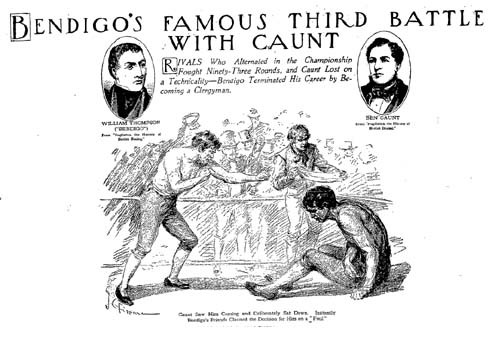
Some writers described the fight as ‘the most scandalous brawl in boxing history’.
Following the fight Tom Spring (a supporter of Caunt) challenged the result and thereby, questioned the integrity of the referee.
Spring retired as a fighter in 1824 and became landlord of the Castle Inn at Holborn in London. It was there that he became a respected promoter of the sport. He arranged the patronage and contracts of many of the major boxing events of the period, while overseeing fair play in the ring.
Tom Spring was a formidable boxer himself, nicknamed ‘Light Tapper and known for his strength of character, courage and skill in the ring.
Born in Herefordshire in 1795, he boxed locally and in 1814 met the legendary champion Tom Cribb. Cribb was impressed by Spring’s prowess, and persuaded him to go to London under his patronage; this was the beginning of Spring’s boxing career.
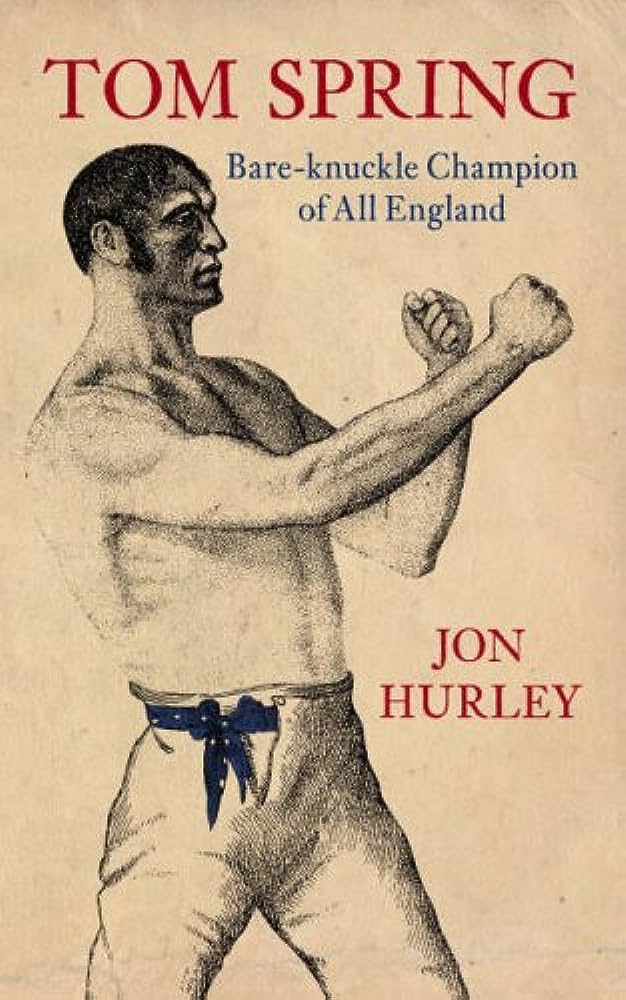
The referee though, was no other than George Osbaldeston an English politician who served as MP for East Retford.
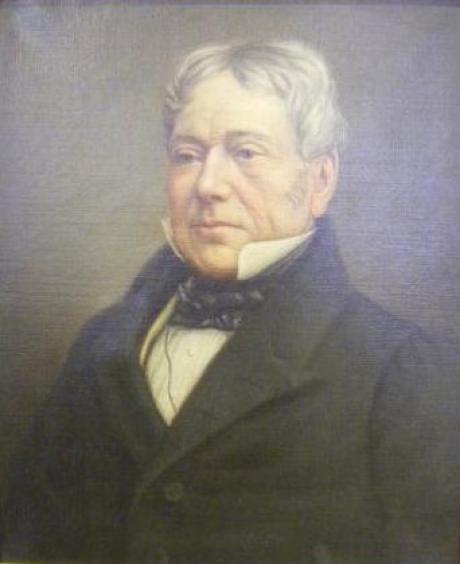
Known as The Old Squire, Osbaldeston was also respected as a sportsman and first-class cricketer. His integrity was being challenged for the first time.
Osbaldeston responded to Spring’s challenge in a letter to the editor of the Bell’s Life newspaper.
Sir,
An appeal having been made to me, as referee, by Mr Spring, to reverse my decision in the late fight between Bendigo and Caunt, on grounds unworthy of my consideration, I request you will confirm that decision by paying over the stakes to Bendigo, who, in my opinion, is justly entitled to them.
It was with the greatest reluctance, and at the particular request of my friends and the unanimous solicitations of the backers of the men, that I accepted the office; but I shall always consider it one of the greatest acts of folly I ever was guilty of in my life.
In discharging my duty I endeavoured to do justice to the contending parties to the best of my abilities and judgment; and, arriving at the conclusion I did, and now confirm, I was actuated only by a complete conviction of the justness of my decision, and not by the intimidation of the roughs, as stated by Mr Spring in his letter.
Had I been under the intimidation of the ‘roughs’ I had several opportunities of putting an end to the fight before the conclusion by foul acts on the part of Caunt. A noble lord, and several gentlemen who stood close by me during the whole fight, can corroborate this statement. I most positively deny that I stated to any one that a man going down without a blow, after he himself had treacherously delivered blows, was fair.
In no one instance, in my judgment, did Bendigo break the laws of fair fighting. I must also deny, in the most positive manner, that I ever stated to any person that I did not see the last round. I saw every round distinctly and clearly, and when Caunt came up the last round he had evidently not recovered from the 92nd. After the men were in position Bendigo very soon commenced operations, and Caunt turned round directly and skulked away, with his back to Bendigo, and sat down on his nether end. He never knocked Bendigo down once in the fight, nor ever got him against the ropes in the last round. In my opinion Caunt got away as soon as he could from Bendigo, fell without a blow to avoid being hit out of time, and fairly lost the fight.
I am, your obedient servant,
THE OLD SQUIRE.
Doncaster. Sept 1845.
